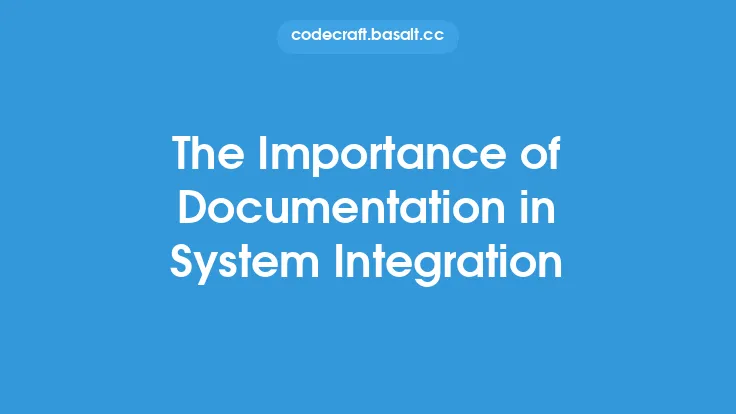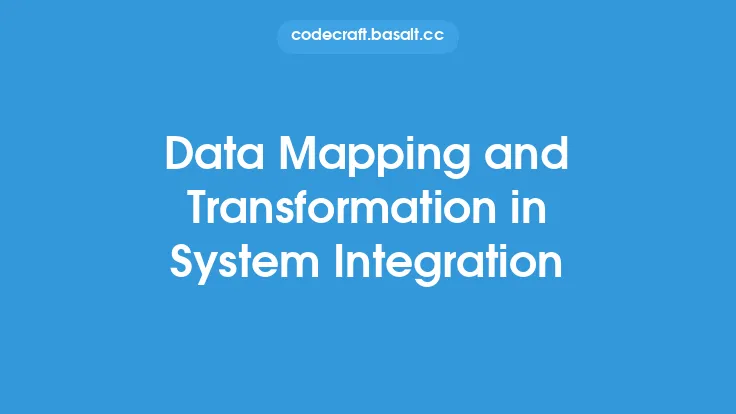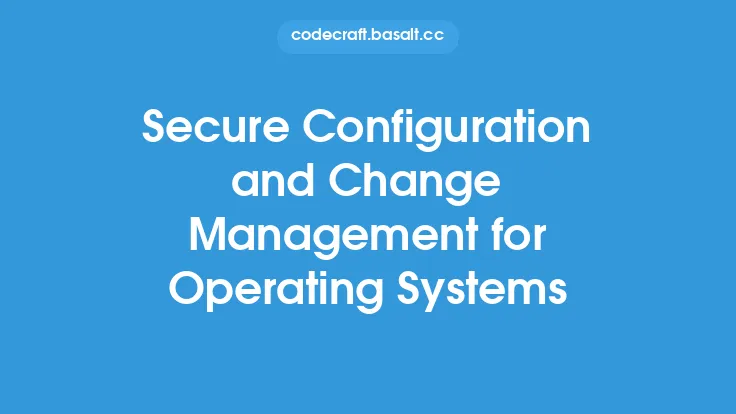System integration is a complex process that involves combining multiple systems, applications, or services to create a unified and cohesive whole. One of the critical aspects of system integration is change management, which refers to the process of planning, implementing, and monitoring changes to the integrated system. Effective change management is essential to ensure that the integrated system remains stable, secure, and continues to meet the evolving needs of the organization.
Introduction to Change Management
Change management in system integration involves a structured approach to transitioning individuals, teams, and organizations from a current state to a desired future state. It requires a deep understanding of the integrated system, its components, and the potential impact of changes on the overall system. The goal of change management is to minimize disruptions, reduce risks, and ensure that the changes align with the organization's strategic objectives. Change management involves a range of activities, including impact analysis, risk assessment, testing, and deployment.
Types of Changes in System Integration
There are several types of changes that can occur in system integration, including:
- Functional changes: These changes involve modifying the functionality of the integrated system to meet new business requirements or to improve existing processes.
- Technical changes: These changes involve updating the technical infrastructure of the integrated system, such as upgrading software or hardware components.
- Data changes: These changes involve modifying the data structures, formats, or interfaces used by the integrated system.
- Security changes: These changes involve updating the security controls, protocols, or procedures used to protect the integrated system.
Each type of change requires a different approach to change management, and the impact of the change must be carefully assessed to ensure that it does not disrupt the overall system.
Change Management Process
The change management process in system integration typically involves the following steps:
- Request for change: A request for change is submitted, which includes a description of the proposed change, the reason for the change, and the expected benefits.
- Impact analysis: The impact of the change is assessed, including the potential risks, benefits, and costs.
- Risk assessment: The risks associated with the change are identified and assessed, including the potential impact on the system, users, and the organization.
- Change planning: A plan is developed to implement the change, including the steps required, the resources needed, and the timeline.
- Testing and validation: The change is tested and validated to ensure that it meets the requirements and does not introduce new defects or issues.
- Deployment: The change is deployed to the production environment, and the system is monitored to ensure that it is functioning as expected.
- Review and evaluation: The change is reviewed and evaluated to ensure that it has met the expected benefits and that there are no unintended consequences.
Tools and Techniques for Change Management
There are several tools and techniques that can be used to support change management in system integration, including:
- Change management software: Specialized software can be used to manage the change management process, including tracking requests for change, assessing impact, and monitoring deployment.
- Version control systems: Version control systems can be used to manage changes to code, configurations, and other system components.
- Testing frameworks: Testing frameworks can be used to automate testing and validation of changes.
- Communication plans: Communication plans can be used to ensure that stakeholders are informed and engaged throughout the change management process.
Best Practices for Change Management
There are several best practices that can be followed to ensure effective change management in system integration, including:
- Establish a clear change management process: A clear and well-defined change management process can help to ensure that changes are properly assessed, planned, and implemented.
- Involve stakeholders: Stakeholders should be involved throughout the change management process to ensure that their needs and concerns are addressed.
- Use automation: Automation can be used to streamline the change management process, reduce errors, and improve efficiency.
- Monitor and review: The change management process should be continuously monitored and reviewed to ensure that it is effective and that there are no unintended consequences.
Challenges and Opportunities
Change management in system integration can be challenging, particularly in complex and dynamic environments. Some of the common challenges include:
- Resistance to change: Stakeholders may resist changes to the system, particularly if they are not well-communicated or if they are perceived as disruptive.
- Technical debt: Technical debt can accumulate over time, making it more difficult to implement changes and increasing the risk of errors or defects.
- Limited resources: Limited resources, including time, budget, and personnel, can make it difficult to implement changes effectively.
However, effective change management can also provide opportunities for improvement, including:
- Improved efficiency: Changes can be used to improve the efficiency of the system, reducing costs and improving productivity.
- Enhanced functionality: Changes can be used to add new functionality or features to the system, improving its overall value and effectiveness.
- Increased agility: Changes can be used to improve the agility of the system, enabling it to respond more quickly to changing business requirements and market conditions.
Conclusion
Change management is a critical aspect of system integration, requiring a structured approach to planning, implementing, and monitoring changes to the integrated system. By following best practices, using specialized tools and techniques, and involving stakeholders throughout the process, organizations can ensure that changes are effective, efficient, and aligned with their strategic objectives. Effective change management can help to minimize disruptions, reduce risks, and improve the overall value and effectiveness of the integrated system.





